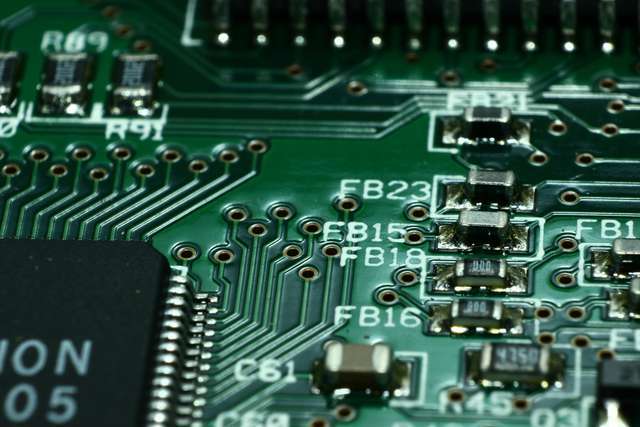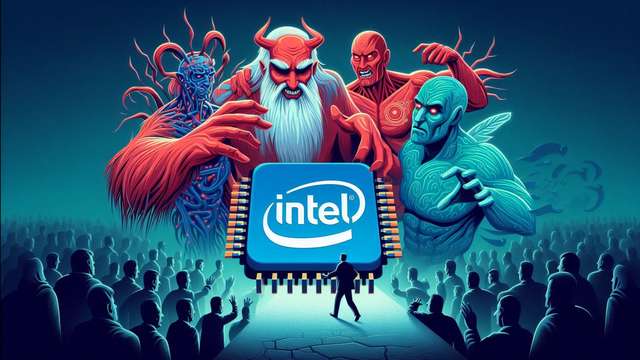
The dynamic development of artificial intelligence worldwide, especially in the context of military applications, recently prompted the United States to take decisive steps to limit China's capabilities. What resulted from this?
Table of Contents
Recall that last year, the American administration banned the sale of the most advanced chips for training artificial intelligence systems beyond the Great Wall.
Americans Say "Stop"
The progress that has been made in this field, particularly in the context of AI, has led to the latest technology available in China being more powerful than ever... despite the fact that the capabilities of the chips have been severely restricted, and these chips are much less effective in the Chinese market than the same components available in other parts of the world.
The result? A significant increase in Chinese orders for the most advanced processors originating from the United States. Leading Chinese technology companies ordered components worth $5 billion from Nvidia - the same graphics processing units became the cornerstone for training artificial intelligence models.
As you might imagine, the global demand surge for Nvidia products will likely impact the company's financial results in the second quarter, which has already reverberated widely in the industry.
Pressure in Beijing
The rush on the part of the Chinese is, of course, driven by their own needs, but not solely. Beyond the Great Wall, there are concerns that Joe Biden and his administration might soon tighten export controls even more, which could pose a significant problem in the future.
However, Bill Dally, the chief scientist at Nvidia, suggested that export controls from the United States would have a more substantial impact in the future.
As the training requirements for the most advanced AI systems double every year, even every six months, the gap between chips sold to China and other countries is growing quite rapidly, said Bill Dally, head of Nvidia's scientific team, in an interview with the Financial Times.
Nevertheless, Washington takes the matter very seriously, which in turn has resulted in limits on the maximum processing speed of integrated circuits that can be sold in China, as well as limits on the data transfer speed of these chips. This is a crucial factor in training large AI models, an extremely laborious task that requires the integration of a large number of circuits.
Pointing Fingers, but Only Slightly
How does Nvidia respond? The American giant has reduced the data transfer speed in its A100 processors, then the top GPUs of the company, creating a new product for China called the A800, which complied with export controls.
This year, the company introduced data transfer speed restrictions for its H100 processor - new and significantly more powerful, specially designed for training large language models, creating a version called the H800 for the Chinese market.
The company did not disclose the technical capabilities of the chips specifically created for China, but computer manufacturers were informed in detail about this.
For example, Lenovo promotes servers containing H800 chips, claiming they are identical in every respect to the H100 sold in other parts of the world. The exception? Data transfer speed of only 400 gigabytes per second.
This is well below the 600 GB/s limit set by the United States for chip exports to China. For comparison, Nvidia announced that its H100, which it began delivering to customers this year, has a data transfer speed of 900 GB/s!
Less Means More
Lower data transfer speeds in China mean that users of these chips will need more time to train their AI systems compared to Nvidia's customers in other parts of the world. In the current context of strong competition and geopolitical rivalry, this has significant implications.
Longer training times lead to higher costs, as the circuits will require more energy, which is one of the major expenses associated with large models.
However, even with these limitations, the H800 chips available in China are more powerful than what Beijing had at its disposal until now.
According to Patrick Moorhead, an American chip analyst at Moor Insights & Strategy, H800 chips are five times faster than the A100 chips, which until recently were Nvidia's top GPUs.
This means that Chinese technology companies that trained their AI models using the latest integrated circuits purchased before the US export controls came into effect can still expect significant improvements by acquiring the latest components.
Ace Up the Sleeve
- It seems that the US government doesn't want to definitively shut down China's efforts in artificial intelligence, but rather limit them a bit - said Moorhead.
Interestingly, according to Chinese engineers, only Nvidia's chips can provide the efficiency required for training AI models. The performance of an individual chip from the 800 series, despite the weakened data transfer speeds, is still better than other solutions available on the market.
So, the Americans are playing their cards strongly, and if they wanted, they could strike even harder against the Chinese. However, their goal is not merely to outdo them in this field. The long-term plan is to enlarge their advantage while simultaneously applying pressure on Beijing and keeping aces up their sleeves, which will undoubtedly matter in this game of giants.






